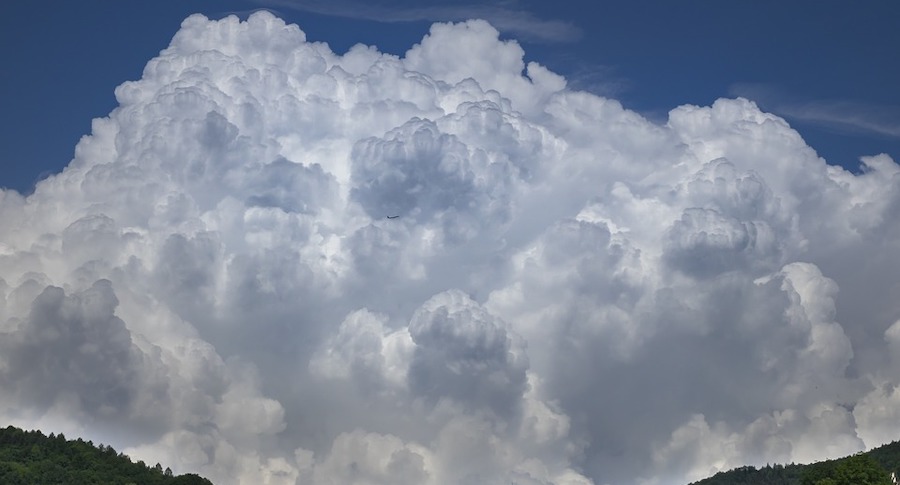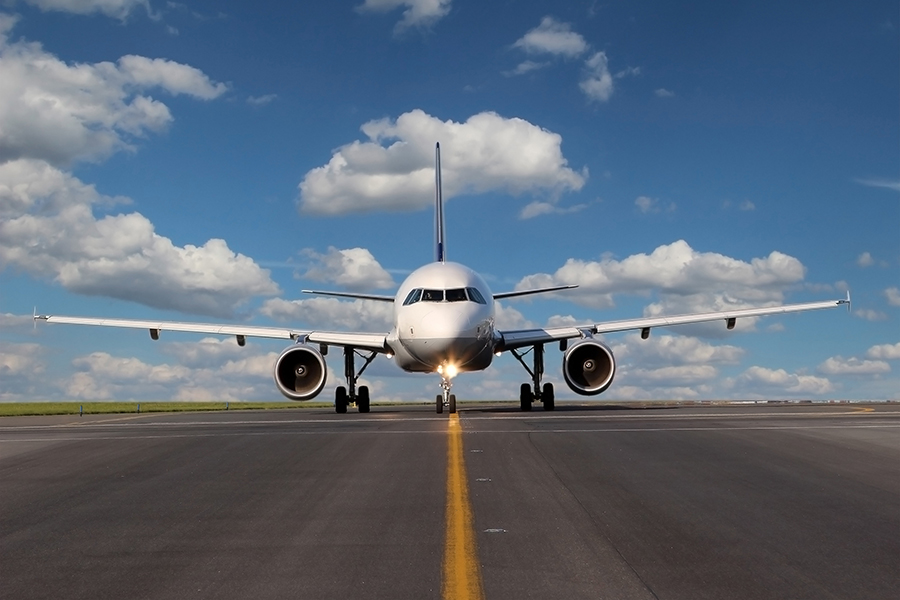-
Can a Private Pilot Fly in Bad Weather?
-
Flying in Low Cloud
-
Flying in Heavy Rain
-
Flying in Strong Winds
-
Flying in Snow and Ice
-
Flying in Thunderstorms
-
Can Commercial Airliners Fly in Bad Weather Conditions?
-
Are Some Weather Conditions Too Bad for Any Aircraft to Fly?
-
A Personal Example of Really Severe Weather
- Leaving our Base
- Signs of the Thunderstorm
- The Situation Gets Worse
- We Fly Home Safely
-
Conclusion
Pilots frequently worry about flying in bad weather. This topic is covered in various parts of the PPL syllabus, and so it should be, for bad weather flying can be dangerous.
So if you are a private pilot, can you fly safely in bad weather? And if so, how bad does it have to be to be considered too bad, and when should you stay on the ground? What weather conditions should you very definitely steer clear of?
Moving on to larger aircraft, many of us know that they do not have the same restrictions as small planes. Indeed, modern large aircraft can fly in most weather conditions. But there is some weather which can be dangerous for any type of aircraft.
We will take a look at all these issues in turn….
Can a Private Pilot Fly in Bad Weather?
The answer to this is ‘depends’. It depends on both your qualifications and experience, and also the type of plane you are flying.
If you are fairly new to flying, and are in a simple single engined plane with minimal instrumentation, you would be well advised to stay on the ground if the weather is bad. There will be plenty of time for learning about bad weather flying at a later date. If you really want to fly, ask an instructor, and maybe take him or her with you.
However, if you have an instrument qualification and are in current instrument practise, and flying an aircraft with suitable instrumentation, you can fly in much worse conditions. Even so, this does not mean you can completely ignore inclement weather.
So let us take a look at different weather conditions and whether you should fly in them.
Flying in Low Cloud
Low cloud is rarely a problem. But if the cloud is so low that you cannot keep clear of it, and you only have a PPL, you should definitely stay on the ground.
But if you have an Instrument Rating and are in current practice, you can probably fly safely in most low cloud conditions. Cloud in and of itself is not dangerous. It is the poor visibility which arises as a result of it which can cause problems.
Flying in Heavy Rain
Rain is not actually dangerous to aircraft, and you can often fly through rain with no issues at all. The main problem is that heavy rain often leads to poor visibility. Again, whether or not you can fly in heavy rain depends on your qualifications and what sort of instrumentation your aircraft has.
Instrument qualified pilots should have no problem flying in rain. But pilots with a basic PPL might, depending on the intensity of the rain.
Every pilot should beware of freezing rain, which is very dangerous as it can cause a quick build-up of ice on the wings. In conditions like this, stay on the ground.
Flying in Strong Winds
Small aircraft may get tossed around in strong winds, but unless the winds cause severe turbulence, winds by themselves are unlikely to do much harm. It can, however, be quite frightening to fly in strong winds. And if you or your passengers tend to suffer from airsickness, it is really not a good idea.
Strong winds can also make landing difficult, particularly if the wind is right across the runway. If this is the case, you will need to calculate if the crosswind component is too strong for your particular aircraft….and for your experience too. If necessary, you can fly to another airport with a runway pointing into wind, where it will not be a problem for you to land.
Flying in Snow and Ice
Small aircraft need to be quite careful of snow and ice. If ice builds on the wings of a small plane, this can be very dangerous, and small aircraft generally do not have de-icing equipment. If you find ice is building on the wings, fly lower, and land if necessary.
Snow is not that much of a problem, although you do not want to try landing on it unless you are used to doing that kind of thing.
So if snow and/or icing conditions are forecast, be careful.
Flying in Thunderstorms
Thunderstorms can be very dangerous for small aircraft. They often involve severe turbulence, which can cause structural damage. So you really should steer clear of them.
Luckily, storms are usually limited to a fairly small area, and it is possible to fly around them. You would be advised to avoid them by 1 – 20 nautical miles, which means in practice that you keep well away from the turbulence they cause. If you cannot do this – as in my personal example given below – then it’s time to land.
Can Commercial Airliners Fly in Bad Weather Conditions?
All of the above applies mainly to light aircraft being flown by private pilots. Contrary to what many passengers believe, commercial airliners can fly in almost all weather conditions, and are rarely affected too badly by bad weather.
Strong winds might be a little frightening for passengers, and make serving meals difficult for the flight crew. It is also possible for the crosswind component to be too high for a safe landing, although this is unusual in a modern airliner.
Heavy rain could theoretically affect visibility, but these planes generally fly on instruments anyway, so this will not be an issue in itself. Low cloud is not a problem unless the cloud extends all the way down to the ground, ie fog. Many modern airliners can land in fog using automatic landing equipment, even in zero visibility. However, it may then be impossible for them to taxi!
Snow and ice should not be an issue, as airliners have de-icing equipment. But they still need to beware of freezing rain, which can cause ice build-up too fast for even the de-icing equipment to cope.
Airliners can usually fly around or even through thunderstorms, and contrary to what many people believe, there is little or no danger of being struck by lightning. Airliners do occasionally get hit by lightning, but there is no danger to passengers even if this happens.
This explains why it is rare for commercial flights to be canceled due to bad weather. But of course, it does happen occasionally.
Are Some Weather Conditions Too Bad for Any Aircraft to Fly?
Yes, just occasionally the weather is too bad for any aircraft to fly safely. Modern weather forecasts can usually predict this, and this means that aircraft stay on the ground when this is likely to occur.
But just occasionally the weather is far worse than forecast, and everyone gets caught out, including commercial airliners. As a fairly new PPL, I was once caught out by severe and widespread thunderstorms, too extensive for any aircraft to fly around them. It was very frightening and a real lesson to me at the time. Here is an account of what happened….
A Personal Example of Really Severe Weather
It was about nine months after I got my PPL. I had teamed up with Ed (not his real name) a little earlier, and we often flew together. We had around 100 flying hours apiece, we got on well, and we arranged a flight together most weekends, checking out all the local airfields; then those a little further afield. This time we decided to go to XXX. Neither of us had ever been there, but it didn’t look too difficult, and it would be a good day out.
Leaving our Base
We checked the weather carefully before we went. At our base there wasn’t a cloud in the sky, and all looked good for later on too. So I flew us there, and it was an uneventful flight in lovely weather. We landed safely and walked into town for lunch.
About mid-afternoon, with the weather still looking good, we decided it was time to head back to base. But as we were about to walk out to our aircraft, one of the firemen at the airport mentioned having just heard about thunderstorms “somewhere close by”. However, we shrugged and laughed it off. There still wasn’t a cloud to be seen; storms weren’t likely to affect us. Besides, we could always divert to YYY, which was more or less on our route home, if we really needed to, and Ed lived near there, if we really got stuck. So we climbed aboard – with Ed now acting as Pilot in Command – and prepared to depart.
Signs of the Thunderstorm
The first signs of trouble came very soon after we departed. We heard another aircraft calling on the radio, saying that he was returning “due to thunderstorms”. But he was further East, so we still weren’t too worried. However, soon afterwards, someone near YYY said he was returning to XXX too. It didn’t sound good and I think we both began to realize it.
Just moments later, I noticed that the haze was getting thicker, though the weather was still perfectly flyable. At last I started to wonder if I should say anything to Ed. But he seemed quite happy, and I thought maybe I was worrying unnecessarily, so I kept quiet. After all, he was Pilot in Command, so it was his decision.
The Situation Gets Worse
Soon things began to get worse, much worse. All my instincts were now screaming at me to turn back, that we wouldn’t even make YYY, never mind our home airfield. Ed wasn’t completely stupid either and was clearly thinking similarly, for when a few seconds later XXX Approach tried to pass us on to another frequency, he asked if we could stay with them “for a minute or two, as we may well be turning back”.
Barely a minute later, we felt the beginnings of definite turbulence. In front of us now was a huge black wall of cloud. No-one but a complete fool would have attempted to fly into that, and Ed said, or rather croaked hoarsely, “What do you want to do?”
“Turn back NOW”.
“Right!”
It was quite obviously the right decision…even if we made it a little late. We reached XXX just before the two other returning aircraft which we’d heard on the radio, which had had further to fly. XXX Tower was by now warning of “severe wind shear on final, with a pilot reporting a loss of 10 knots of airspeed”.
Ed executed a perfect landing on the numbers, and the storm hit five minutes after we were safely on the ground, a dramatic affair with high winds and bright pink forked lightning. By now there were several other people who’d returned or diverted, and we swapped stories: “We were 9000 feet up in the airways and dropping at 2000 feet a minute…” You know the kind of thing. Some of the emergency landings were made by airliners, and they weren’t just playing safe! It really wasn’t a good idea for anyone to fly in these conditions.
But as the storm showed no signs of abating, and reports told of a wall of thunderstorms stretching from East to West, things quietened down, at least on the ground. We all began to realize that we were probably stranded overnight, and people began to call family or work, and generally try to reorganize their lives. And we began to look for somewhere to stay, since we clearly weren’t going to make it back until the morning.
We Fly Home Safely
The following morning the weather was good, and Ed flew us back, encountering nothing worse than some patchy early morning mist. We considered ourselves lucky to have survived the experience unscathed, if a little late!
Conclusion
Bad weather should be treated with respect but not fear. There may be conditions in which you can fly safely despite some other people staying on the ground, but the opposite can occur too.
Remember, flying accidents occur every year due to the weather. And as pilots often say, “It’s better to be down here wishing you were up there, than up there wishing you were down here”.
Contents



